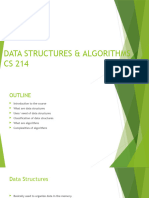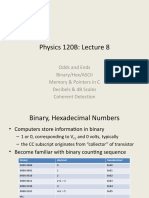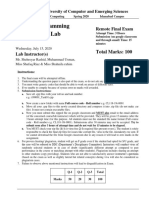0% found this document useful (0 votes)
276 views16 pagesData Structures for CS Students
The document discusses data structures and algorithms. It defines data structures and describes their types and categories. It also defines algorithms and their characteristics. The document provides examples of different data structures and algorithms.
Uploaded by
Muhammad ImranCopyright
© © All Rights Reserved
We take content rights seriously. If you suspect this is your content, claim it here.
Available Formats
Download as DOC, PDF, TXT or read online on Scribd
0% found this document useful (0 votes)
276 views16 pagesData Structures for CS Students
The document discusses data structures and algorithms. It defines data structures and describes their types and categories. It also defines algorithms and their characteristics. The document provides examples of different data structures and algorithms.
Uploaded by
Muhammad ImranCopyright
© © All Rights Reserved
We take content rights seriously. If you suspect this is your content, claim it here.
Available Formats
Download as DOC, PDF, TXT or read online on Scribd
/ 16






















































































